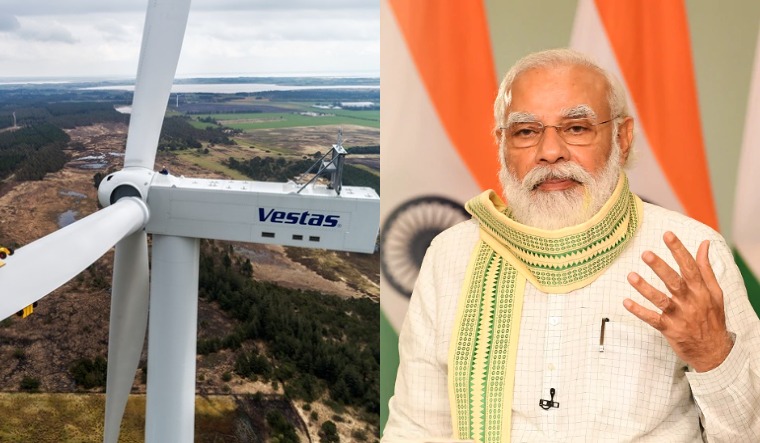Congress leader Rahul Gandhi on Friday shared a clip of Prime Minister Narendra Modi speaking about alternate uses of wind turbines. The clip was purportedly from a video interaction Modi had with Henrik Anderson, president and CEO of Vestas, a Danish wind energy company, on Wednesday.
Modi had tweeted about the interaction, noting, "We discussed a series of issues relating to the wind energy sector. Highlighted some of India’s efforts to harness renewable energy in order to build a cleaner future for the coming generations."
In the clip shared by Rahul Gandhi, Modi says, "... in places where there is higher level of moisture, wind turbines can extract water from the atmosphere and could produce clean drinking water. Thus, wind turbines can produce power and on the backside, suck moisturised air and extract water." Modi cited the utility of such a mechanism in coastal areas and villages where drinking water was scarce.
Modi then referred to the possibility of using wind turbines to extract oxygen from the atmosphere and called for research into this. Modi said it would be challenging to develop the means to extract oxygen by this means. "But if a wind turbine extracts oxygen from the atmosphere... and the market for oxygen is captured, then wind turbines can be used for providing drinking water, oxygen and power supply." Modi said a wind turbine could thus be a "three-in-one" system.
The CEO of Vestas responded enthusiastically to Modi for his suggestions and lauded his "passion" and "excitement".
Rahul tweeted, "The real danger to India isn’t that our PM doesn’t understand. It’s the fact that nobody around him has the guts to tell him."
Not surprisingly, the video clip saw Modi being trolled over what, at first glance, may seem to be outlandish suggestions.
But research into use of wind turbines for generating water has been done. In 2012, a French company, Eole Water, made headlines when it claimed to have modified a wind turbine to extract water from humid air.
Eole Water called the wind turbine design the WMS1000. At the time, it claimed a prototype of the WMS1000 was being tested in a desert near Abu Dhabi and was able to produce 62 litres of water an hour.
CNN explained the working of the Eole Water turbine. "... technology works by first generating electricity in the traditional manner of a wind turbine. This power enables the entire water generating system to function. The next stage sees air sucked in through the nose of the turbine via a device known as an ‘air blower’. All air trapped during this procedure is then directed through an electric cooling compressor situated behind the propellers. This contraption extracts humidity from the air, creating moisture, which is condensed and collected. The water gathered at this stage is then transferred down a series of stainless steel pipes..."
The water is then filtered and purified for consumption. Eole Water had claimed the WMS1000 could produce up to 1,000 litres of water a day, which was enough for a small community of up to 3,000 people. However, the project by Eole Water did not take off and the company also went under. One reason appeared to be the cost.
CNN had reported in 2012, " it costs between €500,000 ($660,000) and €600,000 ($790,000) depending on the location and surrounding conditions to install just one Eole Water turbine".
Use of wind turbines to extract oxygen from the atmosphere is technically more complicated than generating water. However, researchers in the US and Europe have been conducting research for years to utilise wind energy to carry out electrolysis of water to split it into hydrogen and oxygen. The purpose of the research is to generate adequate hydrogen for renewable energy purposes.
BJP spokesperson Sambit Patra took a jibe at Rahul over the tweet and posted two reports on use of wind turbines to produce water. Patra tweeted, "Rahul ji tomorrow morning please get up at night & read the two scientific papers that I have attached herewith. Though I’m sure you won’t understand the complexity of the subject looking at the condition of your non functioning mental 'Turbines'!!"
India is the world's fourth-largest wind energy market and the government intends to add around 100 GW wind energy capacity by 2030.





